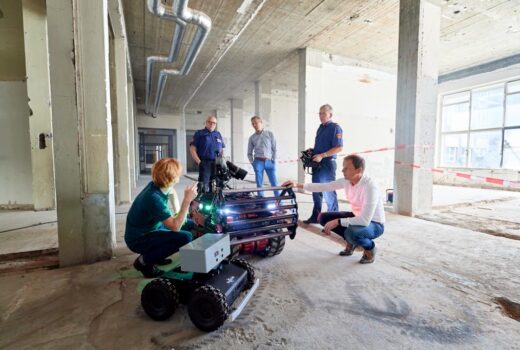Zwakke regio heeft weinig aan Europees R&D

The EU Innovation Agenda: Challenges for European HigherEducation and Research
“For European higher education and research institutions, thedevelopment of effective institutional strategies may well be themajor challenge of the current EU higher education and researchpolicies. These strategies should include the educational, researchand knowledge transfer profiles the institutions want to pursue, aswell as the financial arrangements that should be related to thoseprofiles. In coming years, European higher education and researchinstitutions will have to find strategic institutional answers tothe challenges of the EU innovation agenda.”
Lisbon Agenda
Clearly different from the days before the Lisbon Agenda, theEuropean Union has become a major higher education and researchpolicy actor, and many universities and academics have experiencedits conditions and effects. The supranational EU policy level hasbecome part of the multi-level governance system that Europeanhigher education and research organisations are dealing with.
There appears to be an increasing alignment of EU highereducation and research policies with the various national policies.The “re-launched” Lisbon strategy creates extra pressure on memberstates to align their national policy efforts to the EU innovationagenda. As a result, higher education and research institutions areworking in a multi-level policy context in which the focus isincreasingly on the roles institutions can play in enhancinginnovation.
Academic stratification
There appear to be two effects of the dynamics of thismulti-level governance system that create important challenges forEU higher education and research institutions. The first of thesecan be described as the academic stratification of the Europeanhigher education system, with increasing vertical diversity.
This is the combined result of the changing participationprocesses of European higher education institutions in the researchframework programmes and the counterproductive consequence of thereinforcement policy on the interaction between higher educationand industry. With regard to the former, it has been noted thatpast success in the framework programmes appears to be an indicatorof successful future participation in these programmes (David andKeeley, 2003).
What appears to be emerging is the well-known Matthew Effectwhere research groups that have been successful in obtainingfunding appear to increase their chances of winning future funds.The other process is the counterproductive effect of the EuropeanUnion’s push towards closer links between higher education andindustry.
It appears that those institutions in a relatively weakfinancial position are increasingly forced to accept industrialfunding for often routine contract research. Faced with theimpossibility of charging real research costs, these institutionsare often confronted with a further weakening of their financialsituation and a decrease in their capacity to undertake academicresearch (Geuna, 1999). The combined outcome of these processes isan increasing differentiation between academically and financiallystronger and weaker institutions, and hence a growing verticaldiversity in the overall European higher education system.
Regional differentiation
The second unintended effect is a growing regionaldifferentiation in European higher education and research. Thisappears to be the outcome of three interrelated processes emergingfrom EU research and innovation policies (Frenken et al., 2008).The first is the preference of researchers in “excellent regions”to collaborate with each other, rather than with colleagues inlagging regions.
EU research policy appears to stimulate the concentration oftalent in the richer and academically better-equipped regions ofEurope. Lagging regions find it difficult to participate insuccessful EU research networks and appear to have to cross athreshold of quality and size before they can do so. Secondly, theEU policy objective of the free movement of people appears to notonly lead to an increased mobility of researchers but also to theconcentration of talent in a selected number of excellent regions.The most talented researchers compete for positions at the mostprestigious universities, rendering it difficult for laggingregions to retain talent. Thirdly, the sectoral structure of thepoorer European regions is usually characterised by a dominance oflow-tech and medium-tech activities that do not fit the thematicpriorities of EU research policy.
The framework programmes almost exclusively concern high-techsectors, thus creating a situation in which the research subsidiesare becoming concentrated in the richer regions. The result is anunintended but nevertheless real effect of regionaldifferentiation.
The geography of European higher education and research ischanging from one based on the priority of national borders intoone based on the clustering of talent. Wealthier regions areincreasingly able to profit from the general European innovationpolicy, while poorer regions are left with the resources of thecohesion policy. This process also appears to contribute to thegrowing academic stratification in the EU higher education andresearch system.
Challenge
Academic stratification and regional differentiation confrontEuropean higher education and research institutions with thechallenge to increase their strategic behaviour at the Europeanlevel. The innovation agenda appears to have increased competitionfor funding and reputation.
Higher education and research institutions cannot ignore theeffects of the multi¬level processes they are governed by. Theyneed to design and implement institutional strategies that allowthem to play their own roles in the new system dynamics of EUhigher education and research. For European higher education andresearch institutions, the development of effective institutionalstrategies may well be the major challenge of the current EU highereducation and research policies.
These strategies should include the educational, research andknowledge transfer profiles the institutions want to pursue, aswell as the financial arrangements that should be related to thoseprofiles. In coming years, European higher education and researchinstitutions will have to find strategic institutional answers tothe challenges of the EU innovation agenda.
F.A. van Vught
Annette Roeters reageert in een
Meest Gelezen
Vrouwen houden universiteit draaiende, maar krijgen daarvoor geen waardering
Hbo-docent wil wel rolmodel zijn, maar niet eigen moreel kompas opdringen
‘Sluijsmans et al. slaan de plank volledig mis’
Wederom intimidatie van journalisten door universiteit, nu in Delft
‘Free riding brengt het hoger onderwijs in de problemen’



